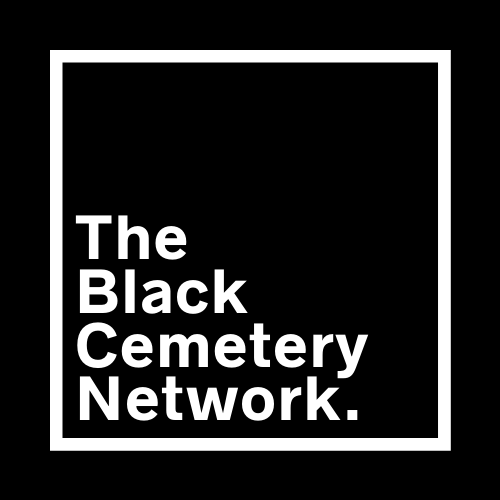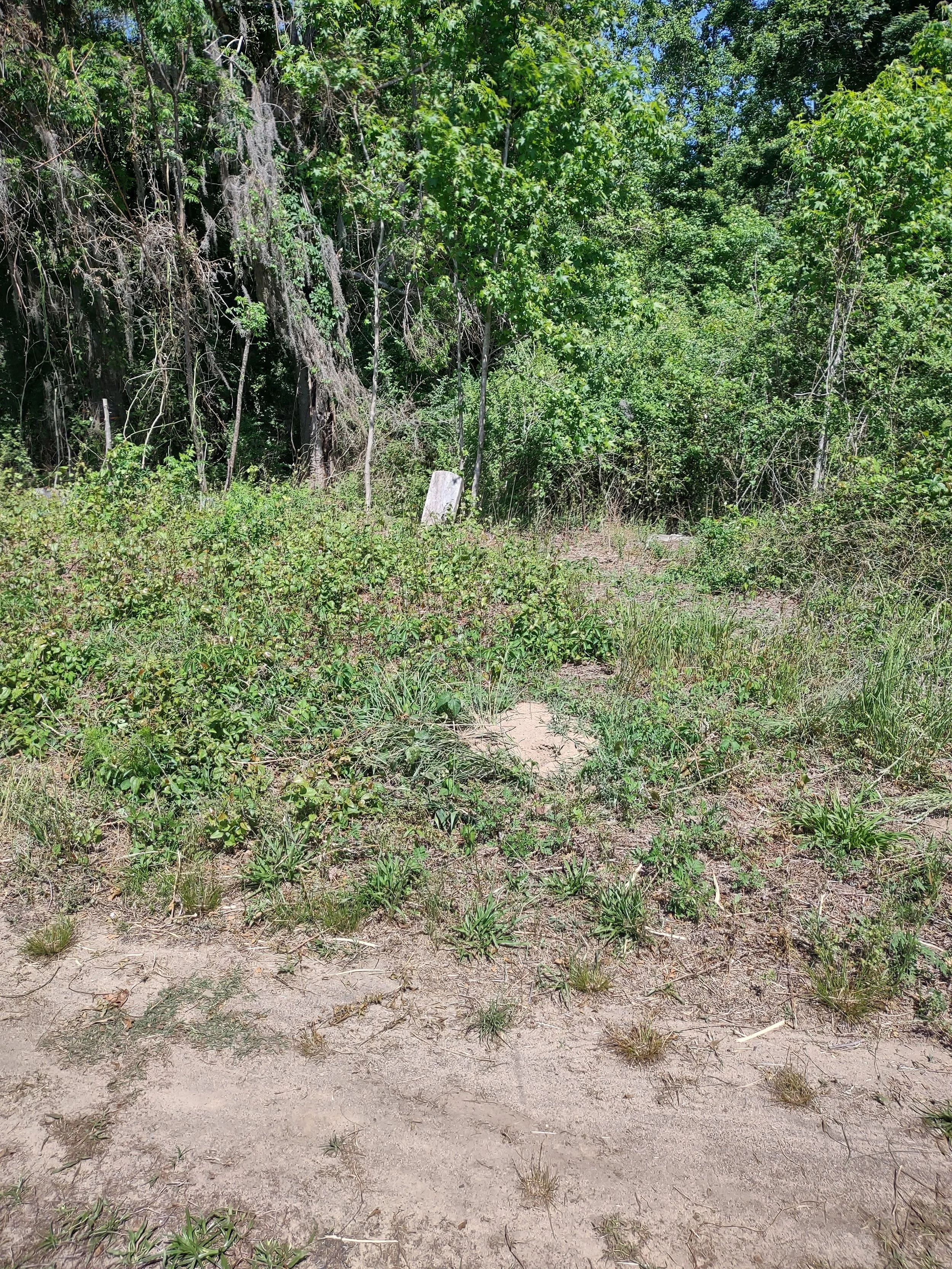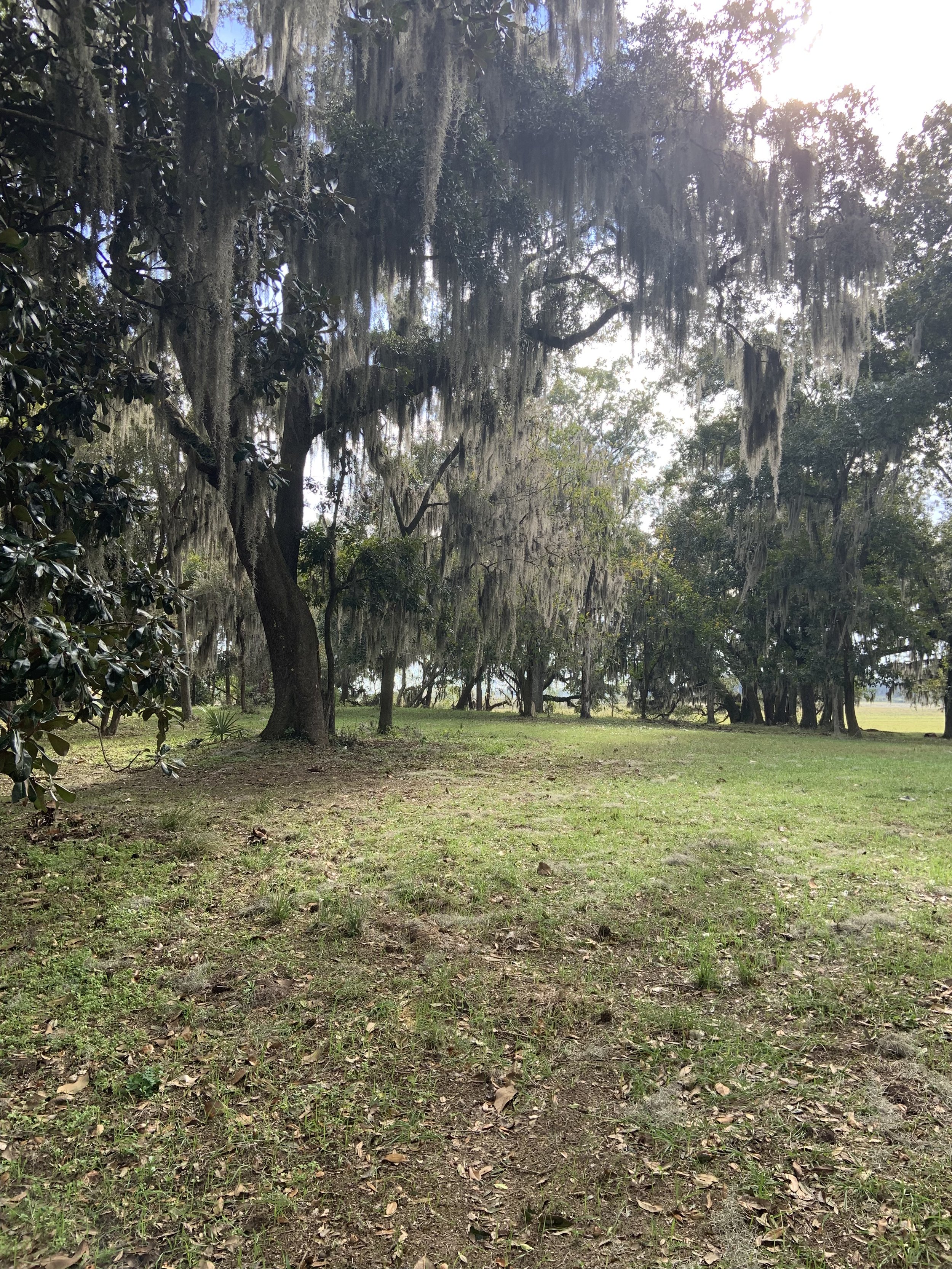SITE DIRECTORY
To learn more about any of the BCN sites listed below, click “Read more” to view individual site briefs. To search for a specific BCN site, use the search bar below:
Hanna African-American Cemetery
HANNA AFRICAN-AMERICAN CEMETERY
FOUNDED: 1896
ADDITONAL NAMES: N/A
AFFILIATION(S): N/A
HISTORY:
Hugh Hanna, Sr. enslaved Black people on his properties, which included a plantation and a cattle farm. His 1825 tax return indicated that he owned 2,420 acres of land and enslaved 28 individuals. In 1896, E.S. Brown and M.R. Brown sold 113 acres to Samuel M. Cameron, an African American. This land included the Hannah and Cameron Cemeteries.
Preserving the Hanna African American Cemetery in Lake City, SC, is important for honoring local Black history and preventing the erasure of the lives and stories of those buried there. As a resting place for formerly enslaved individuals and their descendants, the cemetery holds significant cultural, historical, and genealogical value. Restoring the site would help preserve community heritage, support education, and recognize the contributions of African Americans in the region.
BCN Contact Information:
Dr. Terrie Gaskins-Bryant
bryant107@frontier.com
Fishing Creek Place Cemetery
FISHING CREEK PLACE CEMETERY
FOUNDED: Unknown
ADDITONAL NAMES: N/A
AFFILIATION(S): N/A
HISTORY:
Fishing Creek Place Cemetery was discovered in 2021 after lying undisturbed on private land in York County, South Carolina. Ground penetrating radar has established that there are 144 confirmed graves in this cemetery and numerous likely graves that were not 100% confirmed due to the ground shifting over time. Historical research has allowed us to determine that this cemetery was the enslaved cemetery of the Lowry Plantation which had enslaved individuals from the 1820s until emancipation at which time over 150 enslaved were freed. Local decedents of these individuals have also been found and work in this regard is ongoing. The family that currently owns this property has cleared the cemetery of underbrush, placed markers on each identified graves to prevent future loss, and is in the process of building a fence and gates to delineate this site from the surrounding area.
BCN Contact Information:
Andrew Lazenby
joemess2@gmail.com
Hutchinson Family & Community Cemetery
HUTCHINSON FAMILY & COMMUNITY CEMETERY
FOUNDED: dates back to the 18th and 19th centuries
ADDITONAL NAMES: Botany Bay Plantation & Wildlife Preserve
AFFILIATION(S): N/A
HISTORY:
On June 13, 2023, a group of historical professionals, direct descendants, and concerned members of the Edisto Island community discovered an African American cemetery on Botany Bay Plantation and Wildlife Reserve. This cemetery dates back to the 18th and 19th centuries (before slavery ended). Our historic cemeteries serve as a final stop for our loved ones as well as a window into the past. They not only represent the last resting place of our black ancestors, but they are also actual artifacts of American History.
For those who have studied history, we know that Black people didn’t start being buried in church cemeteries until after the Civil War. So, the question is where are the remains of our beloved ancestors that lived before the Civil War? Historical records from the 1850’s indicate that Edisto Island had 62 operating plantations on an island that is 12-mile long and 8-mile. 62 plantations. It is widely known that enslaved people were almost exclusively buried where they lived or worked at the time. It is our earnest belief that this recent discovery of 16 graves is only the beginning of what lies beneath the surface. We now know that beyond a shadow of a doubt that our people are there waiting to be found.
So why do we care? We care because most of these sites are in real danger of being lost, be it from development, neglect, or simply the loss of community knowledge regarding their locations. We now need to look at the importance of preserving these sacred spaces as well as steps we can take to save them. These graveyards, burial grounds, and cemeteries not only honor our ancestors; they're also an important resource for historians and genealogists who want to tell our history. However, these burial sites are often forgotten or ignored. The protection of these burial grounds is critical to ensuring a more complete, comprehensive understanding of history on Edisto Island, South Carolina. This African American cemetery and others yet to be discovered hold the untold stories of thousands of Blacks who lived and died on Edisto Island and the integral role they played in its very complicated history.
BCN Contact Information:
Greg Estevez
greg_estevez@hotmail.com
The Church Knoll at Fife Plantation
CHURCH KNOLL BURIAL GROUND
FOUNDED: Pre-Civil War likely in the 1820's or 30's
ADDITONAL NAMES: N/A
AFFILIATION(S): N/A
HISTORY:
The Church Knoll is a burial ground of those people enslaved at Fife Plantation (and possibly surrounding plantations) and some of their descendants after Freedom. Fife Plantation was one of the Savannah River rice plantations on the South Carolina side of the river located in what was Beaufort County, SC and is now part of Jasper County. It is a few miles from downtown Savannah, GA. While there are only five gravestones in the cemetery, ground penetrating radar indicates that there are over 600 graves. The size of the cemetery suggests that it was a burial ground not just for Fife, but for surrounding rice plantations as well which are now all part of the Savannah National Wildlife Refuge next to Fife.
There is documentation of those enslaved at Fife in 1851, along with records from the Freedmen's Bureau related to Field Order No. 15, and subsequent 1866 labor contracts. These documents, along with censuses, have allowed for the possibility of finding descendants of those who are buried there. Many of the freedmen and women formerly enslaved at Fife and other nearby plantations settled in nearby Levy, Bellinger and Hardeeville, SC and their descendants still live in these communities.
BCN Contact Information:
Eleanor Harrison Bregman
eleanorharrison@me.com
Kinsler Enslaved Cemetery
KINSLER ENSLAVED CEMETERY
FOUNDED: N/A
ADDITONAL NAMES: Burnside Property
AFFILIATION(S): N/A
HISTORY:
The cemetery is located on property that was originally owned by the Kinslers', who are considered to be a founding family for the state of South Carolina. John Herman Kinsler, one of the enslavers, signed the document of succession from the union, served in the civil war, and surrendered at Appomattox with Robert E. Lee.
The cemetery is one of two known enslaved Kinsler cemeteries in Richland County. The graves are located under a grove of trees with a stream running close by. There are flat stones that resemble slate stone that serve as headstones. The headstones are of different sizes, possibly indicating the age range of the buried individual. It appears that the cemetery is buried on a hillside. The size of the cemetery is unknown as well as the number of individuals buried in the cemetery. Based on this limited information about these early Kinsler descendants, it appears that there was some respect for the burial practices of the enslaved Kinslers'.
BCN Contact Information:
Brenda Kinsler
bkinsler224@gmail.com
African American Burial Ground at Woodland Cemetery
AFRICAN AMERICAN BURIAL GROUND AT WOODLAND CEMETERY
FOUNDED: TBA [Working to establish]
ADDITONAL NAMES: None
AFFILIATION(S): None
HISTORY:
Between July 2020 and January 2021, 667 unmarked burials were recovered in Woodland Cemetery on the Clemson University campus using ground penetrating radar. Though the burial site was known to many in the region for two centuries, Clemson University did not undertake significant efforts to memorialize the unknown burials until 2016. These burials likely belong to the enslaved and free Africans and African Americans who labored at the Fort Hill Plantation and other plantations in the region, as well as sharecroppers and domestics who labored for Thomas Green Clemson following the end of the Civil War. The burials also belong to African American convicted laborers leased from the South Carolina Penitentiary who died while building Clemson between 1890-1915 as well as African American wage workers who labored at Clemson during its early years and their family members.
BCN Contact Information:
Dr. Rhondda Thomas
rhonddt@clemson.edu







